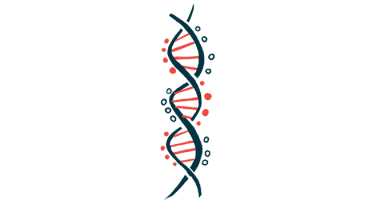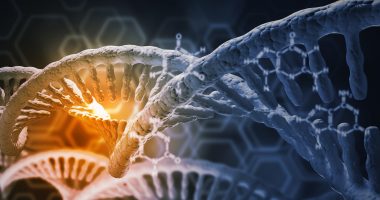Klinefelter Syndrome Boys Show Rett Symptoms More Than Believed

Boys with Klinefelter syndrome, a genetic condition caused by an extra X chromosome, more frequently show Rett syndrome-like symptoms than previously recognized, according to a large-scale chromosomal study in boys with neurodevelopmental disorders.
The researchers also showed that Rett-like symptoms occurred alongside Klinefelter syndrome mosaicism (KSM), in which the extra X chromosome occurs in only some cells of the body. Boys with KSM showed a wide range of symptoms from mild to severe intellectual disabilities and congenital (from birth) anomalies.
They suggested that KSM may be a biomarker for adult-onset brain conditions related to X chromosome mosaicism. Detecting and monitoring mosaicism may help with early diagnosis, they noted.
The study, “Klinefelter syndrome mosaicism in boys with neurodevelopmental disorders: a cohort study and an extension of the hypothesis,” was published in Molecular Cytogenetics.
Klinefelter syndrome affects 1 in 500 to 1,000 males and is caused by an extra X chromosome in cells in addition to the typical XY pairing (XXY). The condition, often diagnosed in adulthood, is characterized by underdeveloped genitalia and low testosterone production, with many boys and men showing impaired social skills and language difficulties.
Klinefelter syndrome’s XXY pattern can be seen in all cells of the body. When XXY occurs in only some cells, it is known as mosaic Klinefelter syndrome.
In rare cases, boys with Klinefelter syndrome carry mutations in the MECP2 gene, the cause of nearly 95% of Rett syndrome cases.
Because the MECP2 gene is found on the X chromosome, Rett mostly occurs in females, as they have two X chromosomes and one remaining functional copy of MECP2. Boys with MECP2 mutations in their single X chromosome rarely survive.
The extra X chromosome in Klinefelter syndrome is thought to provide an additional working copy of MECP2. As a result, Klinefelter syndrome boys with MECP2 mutations may develop Rett-like symptoms.
However, the occurrence of mosaic Klinefelter syndrome in neurodevelopmental disorders such as Rett, as well as intellectual disability, autism and/or epilepsy, and other congenital anomalies, has not been systematically addressed.
Researchers in Russia conducted a chromosomal analysis — called karyotyping — of 4,535 boys (ages 1 month to 18 years) with neurodevelopmental disorders and congenital anomalies to determine the extent of extra X chromosome mosaicism.
The analysis found Klinefelter syndrome in 49 boys (1.1%), with a non-mosaic XXY pattern (all cells) occurring in 21 boys (0.5%). KSM was seen in the remaining 28 boys (0.6%), with mosaicism rates — the proportion of cells with different X chromosome patterns — ranging between 1 and 95%.
The team found the XXY pattern in all KSM cases as well as the X chromosomal patterns XXXXXY, XXXXY, XXXY, XXYY, XXY, and X. They also detected patterns created by structural rearrangements of the extra X chromosomes and two cases with abnormal X chromosomal structure (supernumerary marker chromosomes).
Among KSM cases, about half showed a low level of mosaicism, indicated by less than 20% of cells carrying extra X chromosomes.
The total number of cells analyzed exceeded 25,000, with about half containing extra X chromosomes. Among affected cells, 21.2% carried XXY, 8.1% contained XXXXY, and 6.6% were XXYY.
Those with non-mosaic XXY had Klinefelter syndrome with various neurobehavioral abnormalities, such as mild intellectual disability and autism. Participants with KSM showed a wide range of conditions from mild to severe intellectual disability and congenital anomalies. Among those with extra X chromosomes, 81.6% showed abnormal sexual development.
KSM was frequently found alongside symptoms related to other genetic conditions, including Rett-like symptoms, seen in five cases (0.1%). One case resembling atypical Rett, caused by a CDKL5-deficiency, was also found. Two KSM cases had the developmental disorder fragile X syndrome.
The researchers noted that the “additional chromosome X is required for the survival of males affected by X-linked dominant mutations” like Rett, and “is the most probable explanation for the frequent occurrence of Rett-syndrome-like phenotypes [characteristics] demonstrating KSM.”
“Nonetheless, it should be concluded that Rett-syndrome-like phenotypes caused by MECP2 mutations and KSM are more frequent among males with neurodevelopmental disorders than previously recognized,” they added.
No correlation was observed between KSM levels and clinical outcomes. In addition, the age of those with extra X chromosome was generally lower than 6 years, making a comparison between KSM changes and age not possible.
“KSM proportions are likely to change through [early development] in favor of the abnormal cells,” the research team wrote. “Therefore, KSM might be a biomarker for adult-onset (multifactorial) brain diseases, which are mediated by X chromosome mosaicism.”
“The detection and monitoring of … mosaicism is important for early diagnosis, prognosis and evidence-based therapeutic interventions in brain diseases,” the scientists said.







